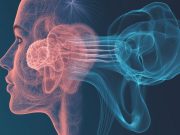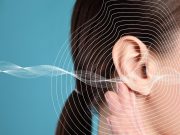Tag: Meniere’s Disease
Performance, Optimal Combination of MRI Descriptors Explored in Meniere Disease
Zero-point endolymph and negative signal endolymph descriptor combinations classified 95.8 percent of ears
Acupuncture May Improve Meniere Disease Symptoms
Benefits include symptoms of vertigo, tinnitus, ear fullness, and hearing loss
Risk for Meniere Disease Higher in Patients With Atopic Dermatitis
Older age, female sex, and allergic comorbidities increase risk for developing Meniere disease
Most With Intractable Meniere Disease Experience Symptom Relief
Among patients wait-listed for nonablative surgery, most were free of vertigo attacks without undergoing surgery
Symptom Pattern of Meniere Disease Often Changes Over Time
While vertigo may spontaneously remit, other symptoms often persist and worsen over time, showing complex disease course
Risk for Meniere Disease Increased With Upper Respiratory Infections
Likelihood of developing MD increased 2.01-fold among those with URI within one year prior to the index date
Dietary Restriction No Aid for Treating Meniere Disease
Findings seen for restricting salt, caffeine, and alcohol intake
Delayed Meniere Disease Tied to Higher Prevalence of Bilateral Disease
Delayed disease also tied to more severe hearing loss and greater contralateral endolymphatic hydrops
Machine Learning Model Can Diagnose Meniere Disease
Light gradient boosting machine learning model achieved performance comparing favorably with experienced clinicians
Study Addresses Differentiating Meniere Disease, Vestibular Migraine
Dissociation between pathological caloric testing, normal video head impulse test can differentiate Meniere disease from vestibular migraine














